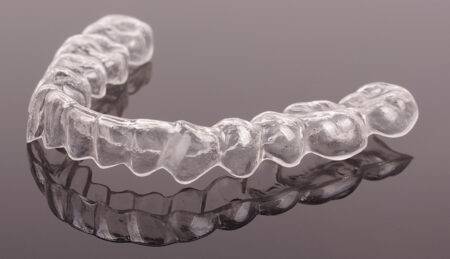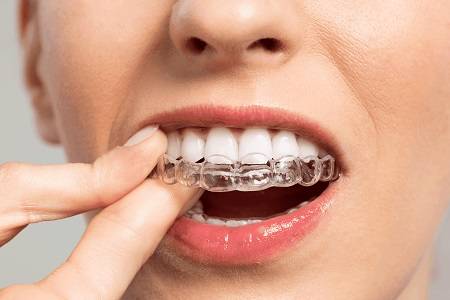Clear aligner therapy has gained immense popularity as a discreet and effective orthodontic treatment option. Behind the scenes, advanced materials and technology play a crucial role in the fabrication and success of clear aligners.
In this blog post, we will explore the key aspects of clear aligner materials and technology, shedding light on the materials used and the technological advancements that have propelled clear aligner therapy to new heights.
Clear Aligner Materials:
Clear aligners are typically made from a transparent, BPA-free thermoplastic material that is both flexible and durable.
Here are some important aspects to understand about clear aligner materials:
Transparency:
The material used in clear aligners is designed to be virtually invisible when worn, allowing patients to undergo treatment without feeling self-conscious about their appearance.
Biocompatibility:
Clear aligner materials are biocompatible, meaning they are safe to use in the oral cavity without causing any adverse reactions or harm to the patient’s health.
Strength and Flexibility:
Clear aligners are designed to exert controlled forces on the teeth, requiring the material to be strong enough to facilitate tooth movement while remaining flexible to provide optimal comfort for the patient.
Digital Scanning and CAD/CAM Technology:
Clear aligner therapy relies heavily on digital scanning and computer-aided design/computer-aided manufacturing (CAD/CAM) technology.
Here’s an overview of how these technologies are involved in the clear aligner fabrication process:
Digital Scanning:
Traditional dental impressions have been replaced by digital scanners that capture highly accurate 3D images of the patient’s dentition. This eliminates the need for messy impression materials and enables a more comfortable patient experience.
Treatment Planning Software:
The digital scans are used to create virtual models of the patient’s teeth, which are then manipulated using treatment planning software. This allows the orthodontist to simulate tooth movements and plan the precise sequence of aligners required to achieve the desired outcome.
3D Printing:
Once the treatment plan is finalized, the digital models are used to generate physical models or 3D-printed molds. These molds are then used to fabricate the custom clear aligners for the patient.
Aligner Trimming and Finishing:
After the aligners are fabricated, they undergo trimming and finishing processes to ensure comfortable fit and smooth edges for the patient.
Advancements in Aligner Technology:
Continuous advancements in aligner technology have further improved the effectiveness and efficiency of clear aligner therapy. Some notable advancements include:
Precision Bite Ramps and Power Ridge Features:
These enhancements help address specific tooth movements, such as extrusion or intrusion, as well as rotational control, enabling orthodontists to tackle more complex cases with clear aligners.
Tracking and Monitoring:
Some aligner systems offer built-in tracking and monitoring features, allowing orthodontists to remotely monitor patient compliance and progress. This technology enables timely interventions or adjustments to ensure treatment stays on track.
Conclusion:
Understanding the materials and technology behind clear aligner therapy is vital for dental professionals offering this treatment option.
The use of transparent and biocompatible materials, coupled with digital scanning and CAD/CAM technology, has revolutionized orthodontics, making clear aligners a popular choice for patients seeking discreet and effective orthodontic treatment.
By staying informed about the latest advancements in aligner technology, orthodontists can provide their patients with the best possible outcomes and an enhanced treatment experience.
At ODONTO, we are dedicated to providing high-quality clear aligner solutions and supporting dental professionals in their clear aligner journey.
For more information on clear aligner materials and technology, visit our website or contact our team for personalized guidance and support.
Stay tuned for our next blog post, where we will explore another important aspect of clear aligner therapy.




